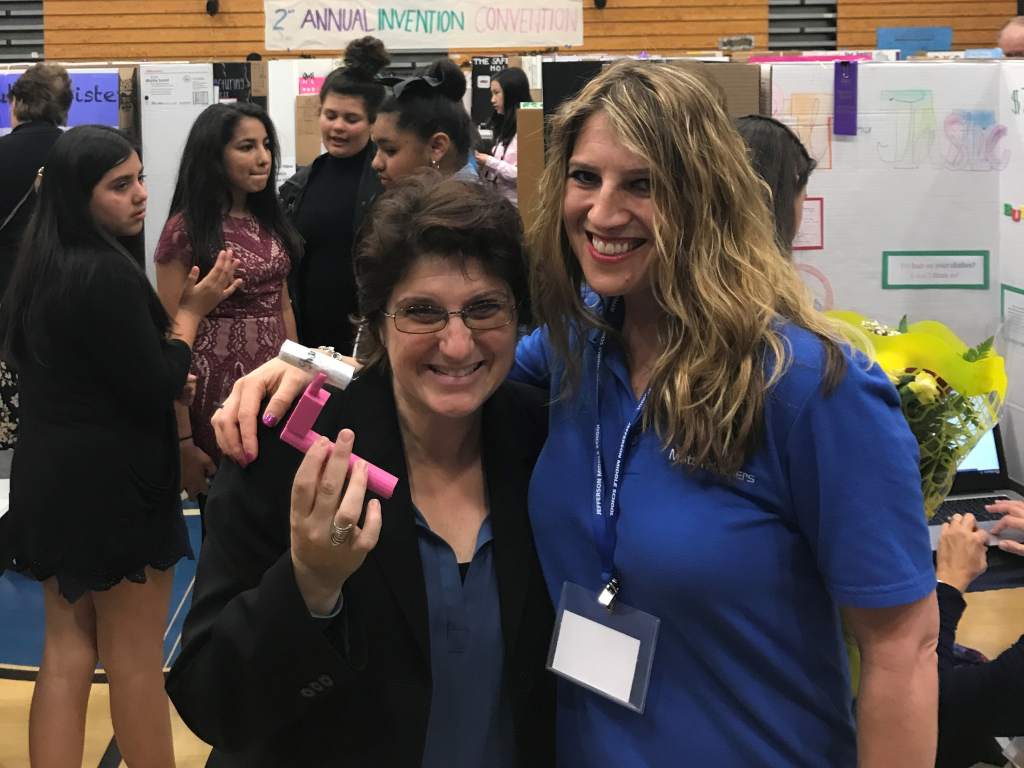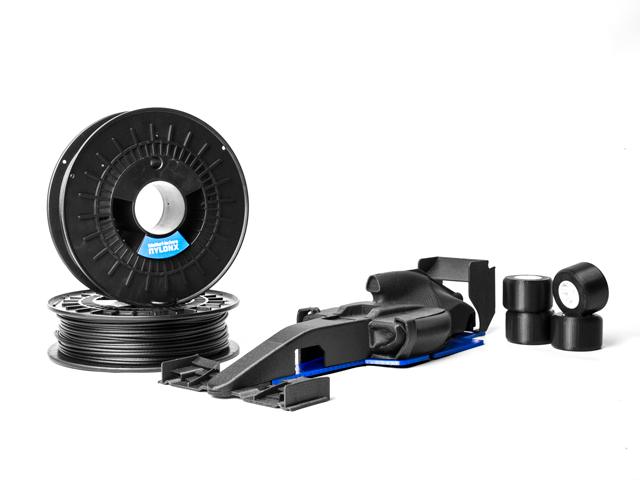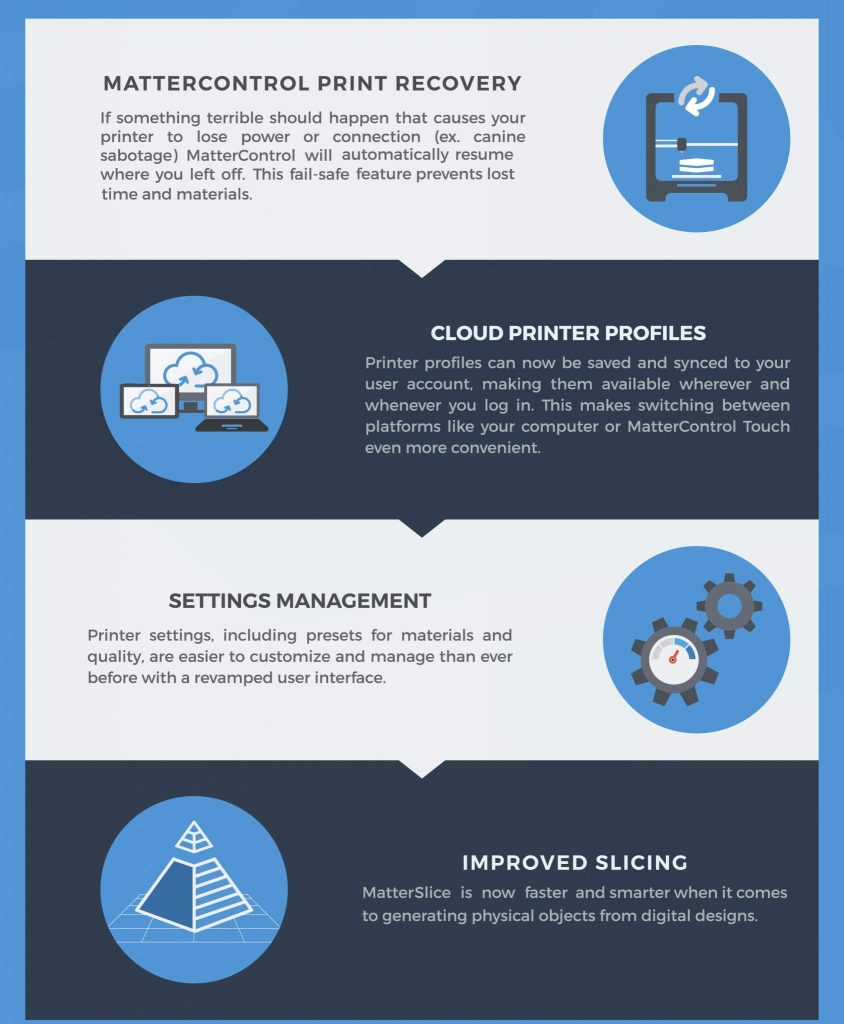This is a guest post in our series looking at the future of 3D Printing. To celebrate 5 years of reporting on the 3D printing industry, we’ve invited industry leaders and 3D printing experts to give us their perspective and predictions for the next 5 years and insight into trends in additive manufacturing.
Mara Hitner is the Director of Business Development at MatterHackers, a supplier of desktop 3D printing tools and materials based in Orange County. In her two years in the industry Hitner has witness a rapid change in the filaments available for 3D printers, and their varied used by schools, businesses, consumers and hobbyists.
Full STEAM ahead for 3D printing in education
In five years, when the story of the rise of desktop 3D printers is told, educators will be cast as the heroes. They will tell us what the future of 3D printing will be, because they are making it up, in front of an audience of kids who will barely look up from their phones to engage with anything. And they are succeeding.
One of my favorite examples is Heather Wolpert-Gowan, a special education English teacher. Her middle school students weren’t excited to write or speak about anything…until she got five Ultimaker 3D printers from MatterHackers. The students would print e-NABLE devices, write letters to the recipients, and then revise those letters through the school year with every device they created giving Heather a way to track their writing progress. When filament was running low, she had them write a mock grant letter to get funding from the school, and then each student had to create a Google slide showing photos of the colors they wanted and an explanation of why. Think about the real life skills being used here – web research on matterhackers.com, saving a jpeg of the filaments they liked and arranging them on a slide with accurate pricing, and the thinking and writing involved in defending their choice of color. She even had them write and perform a rap-battle (ala their favorite Broadway musical, Hamilton) to break a tie for their final color. All of this amazing engagement because they have a 3D printer!

In addition to such examples as Heather Wolpert-Gowan, middle and high schools with major aerospace and manufacturing in their towns need to train students for the jobs of 10 years from now. These jobs will involve million-dollar, large-format additive manufacturing machines, but also desktop rapid prototyping. A 3D printer on the desk of every engineer will be commonplace in the next five years. As you read this, major industries are skyrocketing productivity by having their engineers iterate on prototypes from their desks, and even producing functional parts in-house at a fraction of the cost of service bureaus.
An explosion of materials
Which brings us to how professional users will be integrating desktop 3D printers in the next five years. Industries like manufacturing, aerospace, engineering labs, military, architecture, and really anyone making anything, have already been using them to create custom jigs and fixtures, and prototypes to test form, fit, and function before throwing the final design on the more expensive machines. They are also adopting dual extrusion machines (still well under $5000) to print more complex geometry with dissolveable support material – perfect for users who don’t want to risk the structural integrity of their part by breaking off plastic supports.
In the next five years, I hope to see an explosion of materials for final, useable parts, which will be printable on low-cost machines. We already see composites like NylonX (80% nylon and 20% carbon fiber) producing gorgeous, incredibly strong parts with no post-processing on any rep-rep machine with a heated bed and a $25 hardened steel nozzle.
One of our customers, a machine shop, uses NylonX to make more durable, robust custom fixtures. They were machining them out of aluminum before, but found they were easier to make, faster to iterate on, and ultimately they saved money by bringing 3D printing with professional-grade materials into their workflow. What’s exciting to me is that the more we can help industries be successful with this combination of durable materials and lower-cost machines, the more innovation we will see in our marketplace and in our world. It’s like a short-cut to progress!

As extruders can handle more abrasive and high-temp materials, I hope to see an influx of conductive and magnetic filament, increased gauges of flexibles, and more dissolvable support materials. All of these will be used in dual (or more) extruder machines to produce models with flexible structures and built-in functionality right off the print bed without additional assembly.
The homemade touch
Will every household eventually have a 3D printer in their kitchen next to the microwave? While that scenario may be ideal for those of us who sell them, I’m not so sure. Realistically, I envision desktop 3D printers becoming more like sewing machines are now. If you want one for your home or need one for your hobby or business, they are affordable, accessible, and relatively easy to use with a little time dedicated to the basics. If you want to really master the skill, you better get some formal training, or watch a whole lot of YouTube videos. But if you don’t own one, there are plenty of places you could go and use one for a bit, or just bring your project to a neighborhood professional who can do the job for you in a day or two.
More robust and intuitive software will also help household adoption of this technology. Printer management and slicing software like MatterControl has come a long way in the past two years, and now offers user-friendly features like software-based bed leveling, print recovery and resume, and print monitoring and control via mobile devices.

If you are reading this, you are part of the 3D printing revolution. To make these predictions a reality, it’s going to take a dedicated, talented, inventive, forward-thinking, hard working community of people to share ideas and not take no for an answer. Lucky for us, and for the rest of the world who will benefit from advancements in this incredible technology, that’s exactly what we’ve got to work with.
This is a guest post in our series looking at the future of 3D Printing, if you’d like to participate in this series then contact us for more information. For more insights into the 3D printing industry, sign up to our newsletter and follow our active social media channels.
Don’t forget that you can vote now in the 1st annual 3D Printing Industry Awards.
More information about MatterHackers is available here.
#futureof3Dprinting


